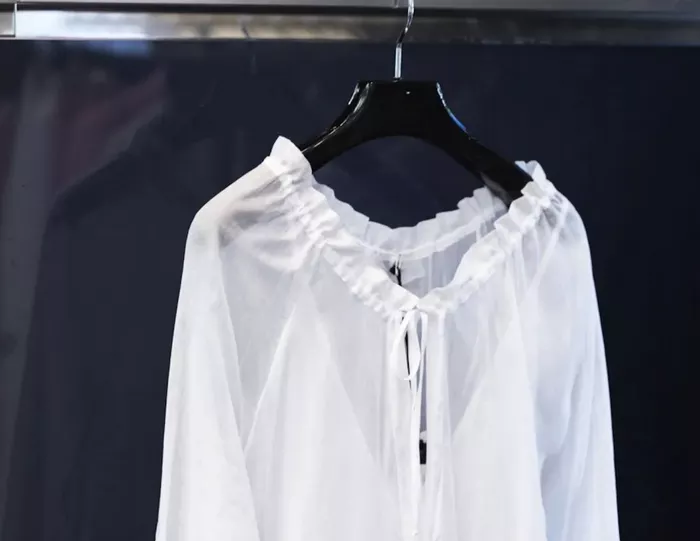Experts are raising concerns over a growing trend in clothing fabrics that may not be as sustainable as they seem. A frustrating experience that many shoppers are facing—the difficulty in finding the right white T-shirt—has become more common, and experts are sounding the alarm, as highlighted by Slate.
It’s not just in your head: finding that perfect T-shirt is becoming increasingly difficult due to a decrease in fabric weight, according to the publication.
“The ‘heavy’ T-shirts used to weigh 8 to 10 ounces per square yard of fabric,” said Elizabeth Easter, a textile chemist at the University of Kentucky. “Today, we see half that.”
Fashion Institute of Technology professor Sean Cormier also confirmed that clothing fabrics are getting lighter. A square yard of fabric in chinos, for instance, used to weigh around eight ounces, but now it’s closer to six.
Thinner fabrics, however, come with a downside: they tend to have a shorter lifespan. Cormier explained to Slate that this trend, although prevalent in the industry, is unsustainable.
He also noted that clothing brands have fewer fabric choices today due to factories controlling supply. Even so, many brands still opt for fabrics that are cheaper to produce, despite the fact that consumers end up paying more in the long run. The reason? The thinner fabric means customers will need to replace their clothing sooner.
“If a company had selected better fabrics, you could have worn it a lot longer,” Cormier pointed out. Unfortunately, this not only drains consumers’ wallets but also has serious environmental and public health implications.
Earth.org highlights that about 60% of clothing is made from plastic-based fabrics. These materials can shed microplastics throughout their lifecycle, which studies have linked to severe health issues such as cancer and dementia.
Moreover, the “throwaway culture” has resulted in over 101 million tons of textiles ending up in landfills each year. This trend is worsened by the fact that the average lifespan of a garment has decreased by 36% over the past 15 years.
Though the American Society for Testing and Materials (ASTM) sets standards for material performance, Cormier explained that fashion companies are not required to follow them.
Despite these challenges, there are ways consumers can make a difference. By choosing to support brands that prioritize sustainability, people can use their purchasing power to promote change.
Related Topics
- Frankie Muniz’s Wife Paige Calls Out Clothing Brands for Sizing Issues
- Fashion App Pickle Faces Backlash for Overwhelming NYC Neighbor with Unwanted Wildfire Donations
- TfL’s Secret Streetwear Line: London Underground Studio Takes Over South Korea

